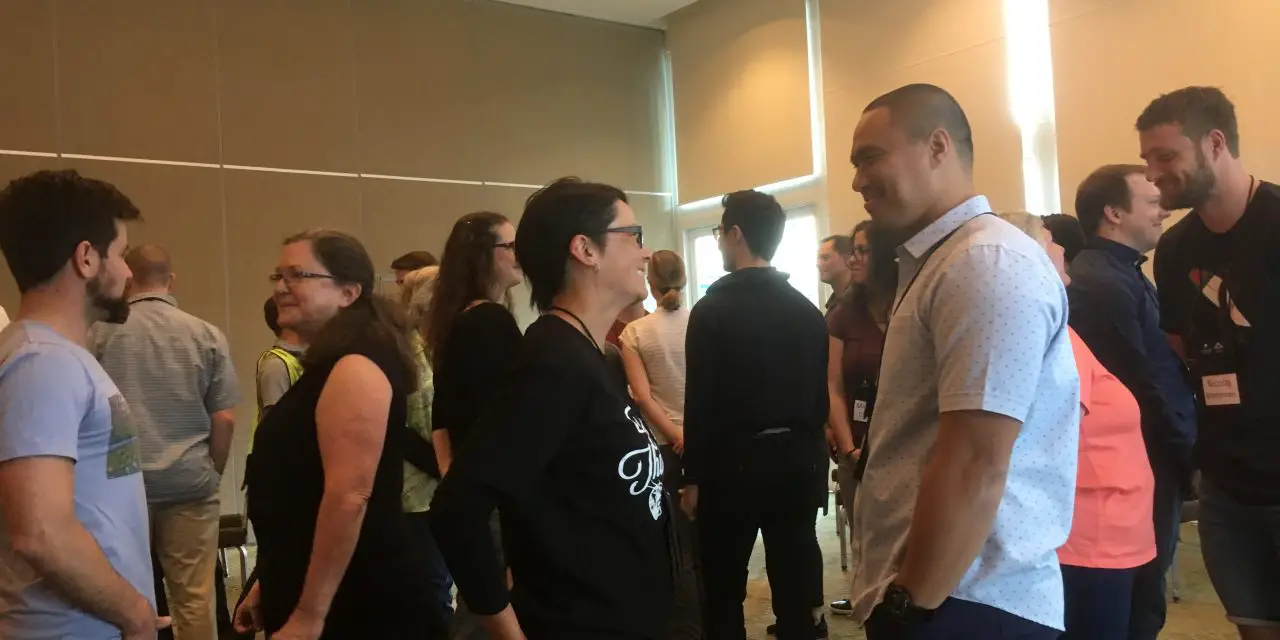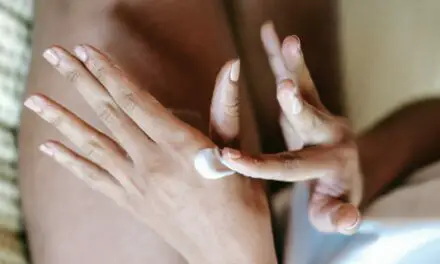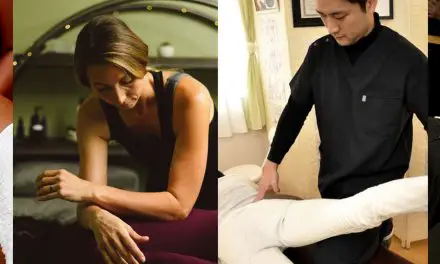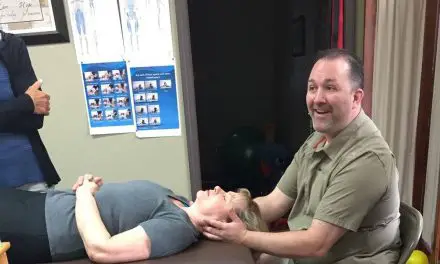When I met physiotherapist Rheysonn Cornillia, who practices in Cavite, Philippines, at the 2019 San Diego Pain Summit, I wasn’t too surprised to hear the problems he faces in his profession are the same as most of my manual therapy friends in Canada, U.S., Europe, Australia, and New Zealand. Given the gradual acceptance and understanding of the biopsychosocial framework and narrative of pain and health (instead of the biomedical/biomechanical narrative) around the world, I was curious if other countries are already changing their education curriculum and practice.
Having seen a few posts about the ISSPCON 2019 in India and ASEAPS Congress Malaysia 2019 recently, I contacted several friends from around the world who are making such small yet steady changes in their country.
Here are their stories.
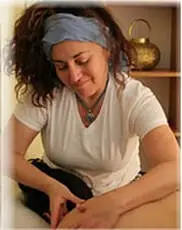
Cara Levy, Moshav Neve Ilan, Israel
The level of knowledge regarding pain science in Israel varies greatly between the massage therapy and physiotherapy. Massage therapy is unregulated here. I myself studied at Machon Wingate, the National Center for Sports in Israel, as opposed to an alternative therapy center because I wanted a science-based curriculum. We studied anatomy, neurology, physiology, basic diagnostics (slump test, straight leg raise, etc.) and postural assessment.
But there is no pain science. We first completed the studies and were certified in ‘Swedish Massage’ and then went on to ‘Medical Massage’. We were taught basic Mulligan and McKenzie mobilization techniques. Trigger point therapy was highly emphasized, fascia stretching as well. With the exception of trigger point therapy, I do want to say that although the explanations may have been lacking, the techniques were pain science friendly, ‘yesi-ceptive’ rather than ‘no-ciceptive.’ I realize now that many of the techniques enhanced neural flossing, for example.
There are other centers in Israel that teach medical and orthopedic massage, and the courses are similar: heavy on trigger points. There is also a lot of faith in dry needling; I know a number of therapists who have taken such courses and practice it.
In physiotherapy, the situation is very different. I took an Explain Pain seminar at the physiotherapy center situated on Kibbutz Givat Haim; they had translated the Explain Pain books into Hebrew; the course itself was taught in English by Tim Beames of the NOI Institute, who has also been here to teach NOI’s Graded Motor Imagery.
There was one other massage therapist, a few doctors, and all the rest were physios. My daughter broke her leg a few months ago; when I walked into the physiotherapists office I saw that his shelves held Explain Pain, Butler’s Mobilisation of the Nervous System, Shacklock’s Neurodynamics. I was very happy she was in good hands! I am in contact with other physios and a few osteopaths, and it seems to me that pain science is definitely gaining ground in these communities.
I would also like to mention that I have, over the last several years, heard more and more people being counseled to NOT have surgery for orthopedic problems by surgeons who actually recommended physiotherapy over the scalpel. Very heartening!
I try to talk to other therapists in the professional setting, and it’s hard to communicate pain science with them, even though I post about pain science. I have sent links to Lorimer Mosely’s “Why Things Hurt” TED talk, lectures by David Butler, Peter Sullivan, and others to dozens of people. They are almost all invested in trigger points or energy work.
Something wonderful, I hope, is about to take place—a DermoNeuroModulation (DNM) seminar here in Jerusalem. A local therapist contacted Jason Erickson and found he was willing to come to teach a seminar here—I helped find a venue, deal with red tape, and I’ve been posting to every forum I can find. Really hope we get enough people interested. I hope it will be a starting point for further education.
In terms of communicating pain science to my clients, I am successful with them in this regard, successful in inspiring their confidence and trust. I will, for example, show self-massage and mobilization to someone with foot pain, use a cell phone to video them performing it, send it to them, and then remind them to do self-care. It works. Even in the spa setting, I am generally successful in persuading people that there can indeed be gain without pain.
I have had clients tell me that they don’t want their massage to hurt. This is terrible. These are people who have been obviously treated by overly-aggressive therapists searching for elusive trigger points. I have also had clients tell me that they know it’s going to hurt, that they know about trigger points. I generally find that I am able to locate the area that they feel will be relieved by deep pressure, and I am able to apply enough broad, firm pressure to provide relief without causing pain. I am well aware of the research disproving the existence of trigger points, and I agree with it, but there is still, for some people, relief to be found in such direct pressure.
I got into “pain science” because I want to know how things work and why they work. And if they DON’T work, I want to know that too!
I absolutely believe that sometimes the issues ARE in the tissues. I also believe that even if the issue is in the tissue, you can reduce the pain and suffering of a person both by providing positive input into the nervous system to “calm it down” and reducing fear by approaching the nervous system on its cognitive level by providing information that inspires the confidence of the person in the ability of the body to heal itself
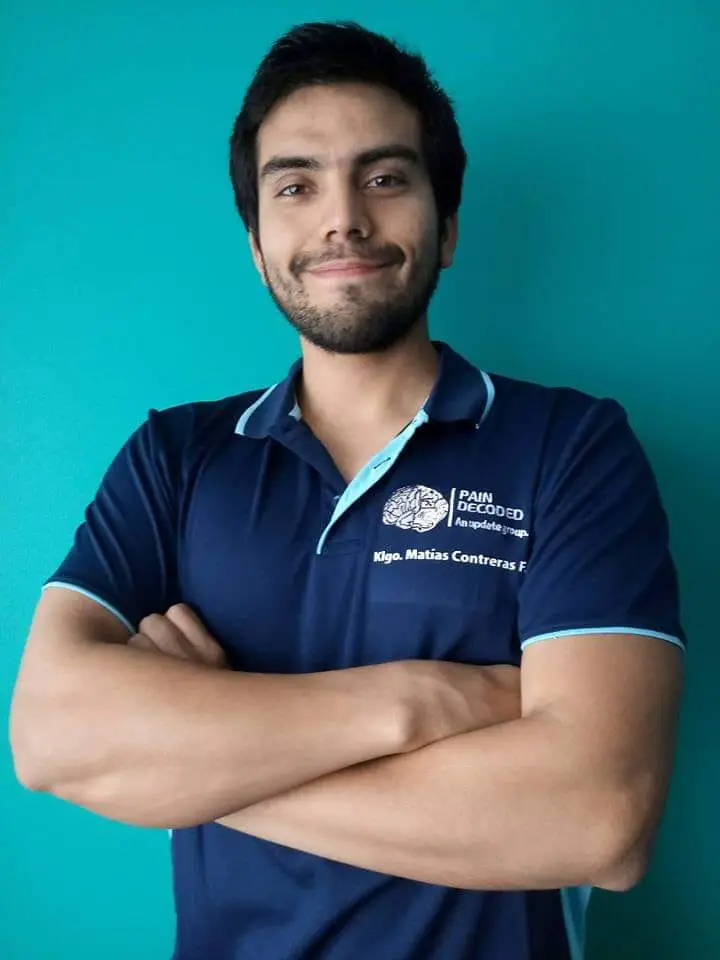
Matías Contreras Fuentes, Concepción, Chile
I have seen many physiotherapists who had their bias in the biomedical model challenged, at least in the musculoskeletal (MSK) field. Every university have their bias and some have the biopsychosocial (BPS) perspective in kinesiology, neurorehabilitation, or special education. Nevertheless, translating the BPS perspective in the MSK field has been a hard process. Many changes in the curriculum has been proposed, and some universities are already doing good stuff with the current literature of pain science.
In clinical practice, we’ve seen a ton of healthcare practitioners, like occupational therapists, physiotherapists, physicians, and nurses with a huge baggage of misunderstanding pain. They teach things like fear of bending forward, the “jelly model” for herniated nucleus pulposus (HNP), core muscle activation for low back pain, and all that stuff. I could argue that most of them are older, but too many younger healthcare practitioners are also searching for the magic bullet. I think it is a “structural” fault because we have an education model since childhood that don’t make you think critically. The model just propose to reproduce the information without skepticism. Same in the university, and few escape from that reality.
I currently co-manage Pain Decoded, and we make infographics to simplify the current literature about pain and propose some clinical pearls to put into practice. For the public, we use the infographics and do group classes to discuss pain topics. I work in education and private practice, and I talk and discuss this with the professors of the school where I work.
For my colleagues, we discuss some of topics about pain and rehabilitation with the infographics that anybody can see in Pain Decoded page. We teach classes at the university and online, including how we educate movement and individual and group management through the BPS lens.
I think the most difficult barrier to changing minds is cognitive dissonance. We see a lot of resistance to change in practice. “This is how I have been practicing since the beginning of my career” is a common response. “Empowerment” is a word that nobody fully understand—even less to apply. Healthcare practitioners with the biomedical lens can’t see behaviors like an area of competence of their respective practice. Self-efficacy is something people want when they understand that they can do more on their own rather than relying on us.
In my private practice, I have one hour for each patient, but in primary care, my friends have 20 to 30 minutes per patient. The patient have the 23 hours of the day outside of our care. If we explain this to them, they understand that they can do more and improve things for themselves. When we face the pain problem and disability from more than a one linear way of thinking, they can modify pain, suffering, and disability in more than one way. They have to promote adherence for themselves, which is difficult for most patients.
Fear models and all that stuff don’t help. It is important that everyone on the team understand and apply the BPS model to promote self-efficacy, but this model of care has to be multi-disciplinary to make it effective.
I got into pain science because I want help to humanize the practice of healthcare in my country. Many friends and family members have gone through very bad, fearful and inhumane healthcare. I want help to change that. People deserve better than that. Our system is already treating us so poorly that it is not an option to let other people also treat us poorly. That’s why I enjoy working with children. They deserve the best of us. Giving the best care that we have is a human right, and that’s why we must do it better.
That’s why I always say, “Pone todo lo que eres en lo mínimo que hagas.”
“Put everything you have [even] in what little you do.”
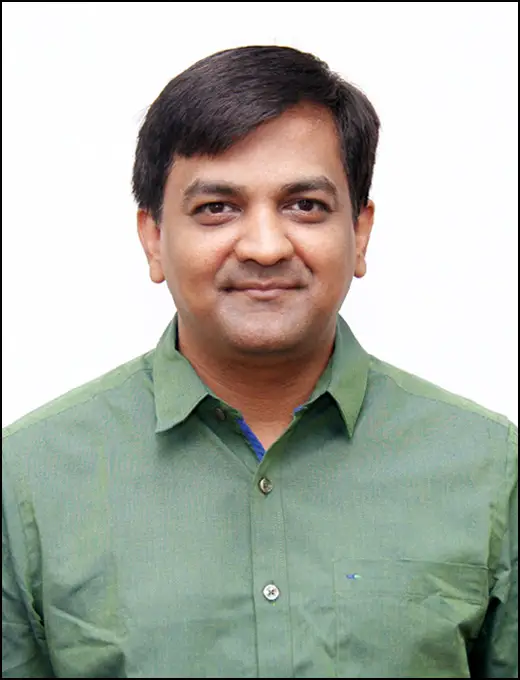
Dr. Prashant Mukkannavar, Hubli, India
In India, the modern understanding of pain science in physiotherapy for undergraduate and postgraduate programs are nil. Recently, few universities added pain science related terms in their curriculum. Few physios are learning pain science through various social media platforms. We don’t have accurate data of pain science application in day-to-day clinical practice or rehabilitation. We need more awareness and training of this “new science” in Indian context.
When we started to discuss and debate, we realised that physiotherapy practice still dominates with tissue-based model in academics, CPDs (continuing professional development), and clinical practice. What I saw few years back that critical thinking and logical conclusions were biased towards this tissue- based model. I understand that these errors are so evident in CPDs and conferences. I started addressing these issues in academic activities and many CPDs. Gradually, I started a few workshops on critical thinking, evidence based practice, physiotherapy research, and statistics. In these workshops, for example, I introduced pain science and the BPS model of pain. These workshops helped our physios and colleagues a lot with their thinking and practice. They are more confident in critical thinking, clinical reasoning, and logical conclusions. I am happy that they are talking and implementing this beautiful science with patients.
Keep in mind that there are 22 major languages in India. That’s why we have started working on these languages for conveying this new insights about pain for patients. We started implementing pain science in post-graduate curriculum. Now we started applying this on patients. too. We have initiated few pain science-related research projects on various musculoskeletal pain conditions. Still, the biggest task is to implement this science in undergraduate, postgraduate, and PhD program.
Since we don’t have much data on pain catastrophizing, kinesiophobia, self efficacy in Indian context, I faced a lot of issues in implementing and communicating pain science for patients. What I realised is that we really need data of patients who speak different languages. I see lots of potential in this regard for application of pain science in multicultural and diverse population. The biggest challenge is to convert these questionnaires into different languages and validate them. Moreover, educating and promoting self-efficacy in Indian context is great a challenge. We have initiated few projects to address these issues. I hope by collaborating with international organisations, we can help our Indian physios for training in pain science.
I started practicing physiotherapy based on the biomedical model. But I soon realised that I was not getting good results. I took many CPDs but implementing all those techniques on patients was challenging. I realised that something is missing in understanding these clients. I started looking at the literature and realised that I had missed the opportunity of understanding pain science. After reading the literature, the implementation in Indian context was promising. I saw some good results in MSK patients. That’s how I started my journey with pain science. I feel cultural diversity of India has a potential in understanding pain science application. Though it is challenging but step by step we can progress in helping these clients for better rehabilitation.
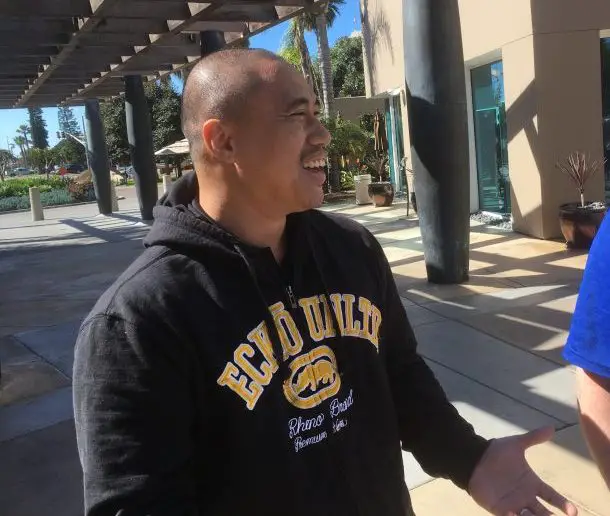
Rheysson Cornillia, Cavite, Philippines
Recently, I applied for a teaching job at a university. I thought I would talk about therapeutic alliance and psychotherapeutic factors that affect patient-therapist interaction. Of course, I had to talk about pain science. The panel interviewed me and observed my teaching demonstration stopped me and said the topic was “too advanced” and not fit for undergraduate physiotherapy. I was also told that the direction of the profession is towards manual therapy. I was asked how I could apply the relevance of my topic to the physiotherapy curriculum.
I was unfit to teach college students because I chose a topic close to my heart: applied pain science. If that doesn’t paint a clear enough picture for you, I will tell you that there are only two doctors I know of who adopt a biopsychosocial perspective in their practice with patients in pain. Not too many medical practitioners are aware that nociception is a thing. Those who know about nociception consider it to still be synonymous with pain. Continuing education courses are still preaching the bio-patho-anatomical theories, and the global predisposition towards low-value care and theatrical placebos have long reached our shores, especially when these are taught by foreign practitioners. Much work remains to be done.
I recently did an interview on a medical program on radio. It was supposed to be about head and neck pain, but I swung the discussion into the IASP definition of pain and their proposed classifications, ruling out red flags, kinesiophobia, and graded exposure. I had a chance to talk about how lifestyle choices, stress management, and sleep could be contributory factors to an individual’s perceived pain.
I am also one of the collaborators behind the Pain Science in Sports Medicine page on Facebook and Instagram. Credit for most of the work and conceptualization goes to my friend Kirby Baloy. We try to be less wrong about things that we do as a profession. I hope the information we share confronts clinicians with their biases and gives non-medical people an alternative hypotheses as to their individual experiences. The page tries to make information palatable through infographics and we also share great content from other pages.
We have a lot of friends putting out great content out there. We could probably do a better job still of making our messages targeted and easier to digest for the general public. It seems that most of us are trying to be influencers to fellow clinicians. I was also able to attend the 2019 San Diego Pain Summit. This was made possible by the kindness and generosity of Entropy Physiotherapy and Wellness’ EPIC scholarship program. People like Lorimer Moseley, Paul Hodges, and Adam Semciw helped to make it a possibility. They sponsored two scholars from anywhere in the world to attend a conference of their choice in order to help the profession grow where growth is badly needed.
Inspired by this experience, I also would like to write a simple book about maximizing our interactions with patients and how we can utilize certain factors of the interaction to make suggestions for better outcomes. I hope to finish that within the year.
As far as communicating pain science goes, let’s reserve that for our colleagues. Our patient interactions should facilitate motivation, create inspiration, and communicate resilience. Applying pain science is not about pain science per se, but it is about fostering an environment of trust and instilling confidence that leads to betterment for the patient. Resilience and self-efficacy should be the goal.
A big challenge for me is how our profession has lost sight of that goal. We are supposed to lead people towards functional independence and self-management. I have often told patients that my job is to make sure they don’t need me anymore. A lot of times, I had to convince patients out of beliefs given to them by practitioners they had seen before me. Patients have been led into having beliefs that become so entrenched in their minds that sometimes it becomes impossible to change.
Imagine having a patient with extreme attention to detail gets told that their hips are rotated the wrong way, their fascia has scar tissue that needs to be broken down, their joint needs to be mobilized, and their muscles need to be activated. Then they come to you expecting that you would have a better way of doing those things for them because the previous practitioner wasn’t very effective. It becomes nearly impossible to change the narrative for some patients. Presenting an alternative point of view could be met with rejection, anxiety, mistrust, or even anger!
I have lost several patients before just because I have not communicated my disagreement with their previous care providers in a way that they deem acceptable. Unfortunately, this is very different from each individual. Sometimes patients, because of preconceived notions and prior experiences, are not ready for the message we bring. This reminds me of the improv workshop we did at the Pain Summit. We learned how to carry conversations with our patients in a way that is non-threatening to their belief system, and non-intrusive to their perception of themselves. We need to say, “yes, and…” more often. Nod in agreement to validate what they said but lead the conversation towards the direction of ideas we want to convey.
I think by focusing on the pathoanatomical models and ignoring the evidence for modern pain care, our profession has been missing the big picture. We need to stop micromanaging patients out of our need to feel significance and relevance. We are micromanaging spontaneity and randomness. We are getting in the way of life happening. This messes up natural history and progression and can lead to patients having fear, anxiety, kinesiophobia, beliefs of frailty, lack of confidence and lack of self-efficacy. We might actually be violating a very fundamental principle: do no harm.
I think I hit the wall earlier on in my practice. As someone who works with a lot of chronic pain patients, you really begin to question yourself, your competency, efficacy, and your knowledge. And as someone who truly cares, I did not blame my patients. I blamed myself. I worked on improving my toolbox and that didn’t work. There was always something or someone better. There was always something I may or may not have done, missed, or did poorly. These beliefs hurt. They hurt me and they burnt me out.
Learning about pain science has led me to knowing that it is not about me. That when patients get better, it is not because of me. Much in the same way, when they get worse, it is not because of me. It led me into being an interactor and not an operator. It helped me have a relationship with my patients so I can hold them accountable for their health as well. It helped me have these “uncertainty journeys” with them. All of a sudden, I was no longer a “care dispenser;” I was a motivator, guide, coach, and learner all at the same time.
I love the complexity of pain science and within each of us. I am obsessed with how we should translate this complexity towards simplicity and present it to people. I love it that it became about how we apply the best available information at the time. I love how this allows us to be wrong at one point in time, but it also allows us to be right later on. If only we are humble enough to learn.
In Part 2, more of our colleagues from other countries will share their perspective on applied pain science and what they are doing to improve their profession.
A native of San Diego for nearly 40 years, Nick Ng is an editor of Massage & Fitness Magazine, an online publication for manual therapists and the public who want to explore the science behind touch, pain, and exercise, and how to apply that in their hands-on practice or daily lives.
An alumni from San Diego State University with a B.A. in Graphic Communications, Nick also completed his massage therapy training at International Professional School of Bodywork in San Diego in 2014.
When he is not writing or reading, you would likely find him weightlifting at the gym, salsa dancing, or exploring new areas to walk and eat around Southern California.

